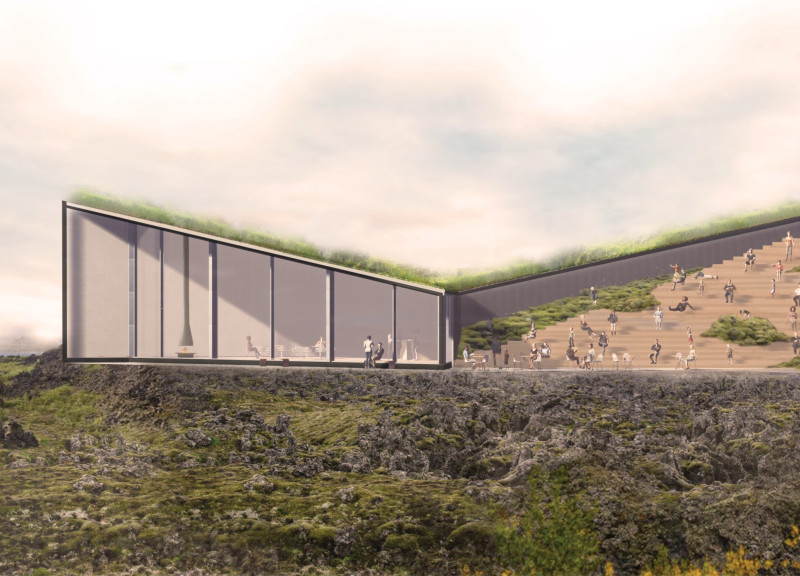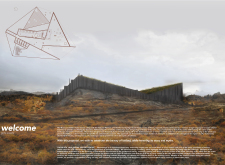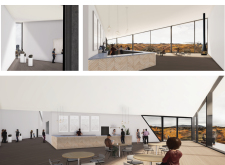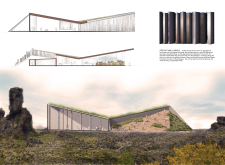5 key facts about this project
The Black Lava Fields Visitor Center is located at Dimmuborgir, an area celebrated for its unique volcanic formations and deep cultural significance. The center is designed to welcome tourists while enhancing their understanding of the surrounding landscape. The overall concept focuses on creating a building that feels part of the environment, merging architecture with nature to reflect the essence of Icelandic lore.
Architectural Form and Landscape Integration
The form of the visitor center is inspired by the geology of the region. It features fractured planes, mirroring natural geological processes that shape the land. These design choices allow the building to resonate with its surroundings. As visitors approach, the entry walls evoke the appearance of the Dark Castle formation, inviting them to connect with the mythology and stories rooted in the area.
Interior Organization and User Experience
Inside, spaces are open and filled with natural light, encouraging exploration and engagement. The layout prioritizes views of the striking lava fields, thus enhancing the sense of welcome that characterizes Icelandic culture. Outdoor spaces for dining and play are carefully oriented to create a connection with the landscape, allowing visitors to experience the beauty of the environment while enjoying communal activities.
Sustainable Design Practices
Sustainability plays an important role in the design. The building adopts principles seen in traditional Icelandic turf architecture, using thermal mass for insulation. The strategic placement of the center into the earth helps moderate the building's temperature. This approach reduces environmental impact and improves energy efficiency through geothermal heating systems and radiant floor designs.
Materiality and Finishing
The exterior of the visitor center features precast wall panels made from concrete mixed with local lava rock aggregates. This choice of materials creates a natural appearance that aligns with the landscape. The varied textures of the walls—alternating between rough and smooth—enhance the building's visual connection to its surroundings. As visitors approach, the differences in texture interact with light, offering a dynamic view that enriches their experience of the site.






















































